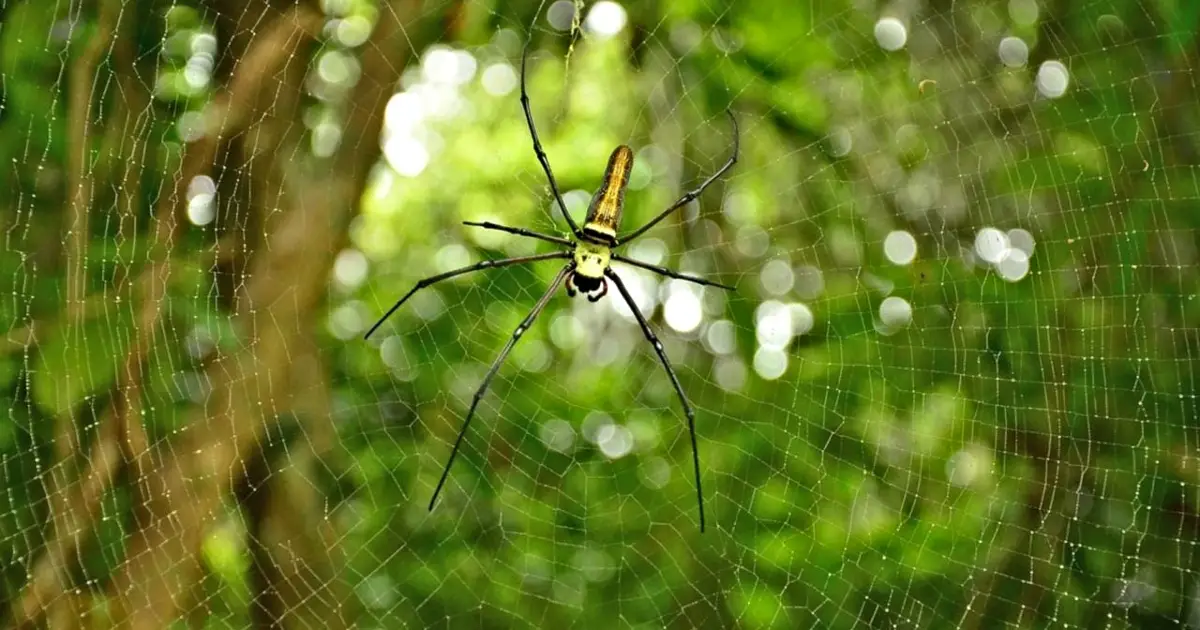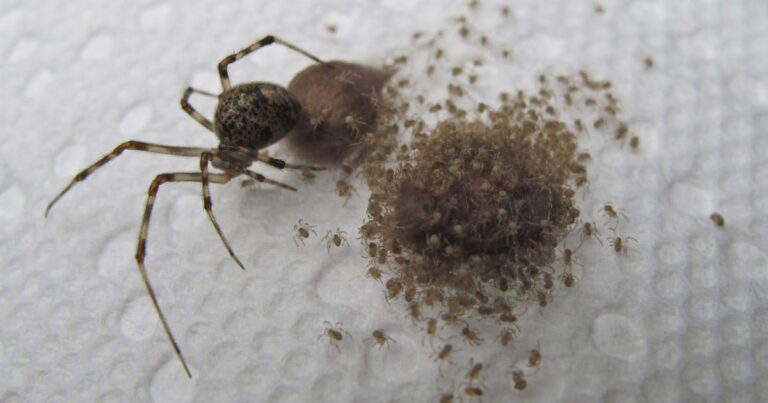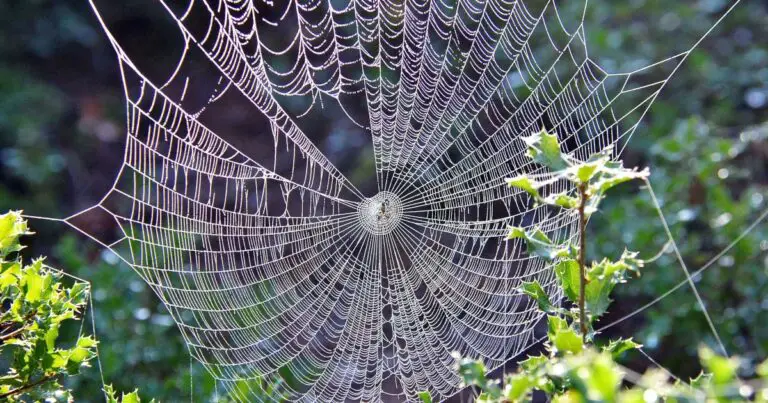What Attracts Spiders in the House (How to Get Rid of Them)
Spiders are attracted to your home for one or more of the following; food, warmth, light, plants and vegetation, gardens, and garbage.
Many people are greatly concerned about spiders coming into their homes. Spiders, despite how hard you may try, can eventually breach your barrier and enter your property. These eight-legged beings seem to find their way into every nook and cranny of your ceilings, attics, and basements.
The first step to reducing the amount of spiders entering your house is to find out what attracts them.
What Makes Your Home & Yard Attractive To Spiders?
- Food – Spiders feed on insects (such as drain flies, bees, and crickets) that live in your house and garden. Although spiders can be considered nature’s pest controllers, they may cause a great deal of fear, especially in those with arachnophobia.
- Light – Spiders are drawn to bright lights and swarming insects. Spiders love real estate where there is an insect-attracting light.
- Warmth – House and cellar spiders are attracted to warm and humid places. They will frequently look for food in the house’s high-moisture sections.
- Plants and Vegetation – Insects are mostly herbivores. This implies they will consume almost any plant on or near your property. The more insects there are in your yard, the more spiders you’ll have.
- Flourishing Gardens – Gardens provide aesthetic value to our environment, but they can also shelter a variety of spiders. Some spiders are enthralled by specific fruits. Keep an eye out for any potentially poisonous spider species that may be present in your garden.
- Domestic Waste – Spiders do not consume food from the home, but they feed on insects that dine on waste or improperly disposed domestic rubbish. Stacks of woodpiles can also act as a great breeding site.
How Spiders Get Inside Your House
Spiders are common in lawns, gardens, and backyards, so unless winter approaches, they are less likely to enter your home. In fact, the majority of them enter your house by accident. Smaller species may enter through gaps around your windows and doors, as well as cracks in the building’s foundation. To prevent spiders and other dangerous pests from coming in and creating infestations, especially during the winter months, seal them thoroughly.
Spiders can creep into your house in a variety of ways. A firewood, box, or plant may all carry spiders indoors. Before bringing them inside, carefully inspect them for signs of cobwebs and spider eggs. Keep an eye out for indications of cobwebs and spider eggs.
The Favorite Hangout Spots of Spiders
It’s a widespread misconception that spiders migrate indoors when it gets chilly. House spiders are accustomed to living inside and prefer dark, confined places with less human activity because they are highly sensitive to movement. They lead secluded existences and appreciate their privacy.
Spiders don’t like damp places; it’s simply the perfect environment for a high insect population, thus spider food. Some of them prefer moist conditions, while others choose to stay in dry settings.
Most common places to find spiders:
- basements
- cellars
- attics
- closets
- corners of the ceiling
- behind large household appliances
- bathrooms
- garage
- inside vehicles
- swimming pools
You’ll be shocked to discover that generic pesticides aren’t always enough against spiders. So, what on earth kills spiders? If you have to use a pesticide to eliminate spiders, opt for one made particularly for the purpose.
What Attracts Spiders To Humans?
Even if you don’t intend to kill them, they may not discover you until you become a hazard to them. Spiders are not compelled by humans in and of themselves; rather, they are attracted to our warmth. Or, as is typically the case, they fall on us from the ceiling or anyplace above head height where they’ve spun their web.
They don’t devote all of their effort to generating fresh silk every time. They consume their own silk, which they recycle by eating. So, no, they didn’t want to harm you or go for a walk along your body. When you walk past them, their recycling process can get disrupted, and their silk can get stuck to you and your clothing.
How to Spider-Proof Your Home
There are a number of things you may do to protect your home from spiders and prevent them from invading and getting comfortable in the ceiling corners of every room.
- Dust frequently.
- Vacuum inside crevices and holes.
- Remove any spider webs that you find around the home.
- Inspect and clean second-hand furniture before bringing it into the house.
- Seal crevices and holes using wood filler or silicone caulking (depending on the need of the hole). This will seal off your home’s entryways, preventing the little pests from gaining entrance.
Regular cleaning may help keep their numbers down. Cleaning and removing their webbing will also eliminate the eggs. It may be quite convenient to seal every tiny crack and hole in a contemporary home. This may be more difficult, if not impossible, in an older property.
If you buy second-hand furniture and discover a spider egg sac in it before you know where you’re going, you’ve just added several hundred spiders to your house. This is a compelling case for ensuring that if you do buy second-hand furniture, you thoroughly clean or have it expertly cleaned.
Cleaning After a Spider Infestation
Spiders are not capable of spreading many diseases, although they can spread germs through their feces and saliva. It’s a good idea to disinfect your property after ridding it of spiders. Because it’s impossible to know where the spiders have been before and what germs they’ve brought with them, make sure to clean your house thoroughly.
Even once the spiders are gone, you’ll need to keep up with a good cleaning to make sure the infestation doesn’t come back. It’s a good idea to vacuum and dust at least once or twice a week. Give more attention to the areas of the home that spiders frequented.
How Can You Keep Spiders Out Of The House?
It’s not difficult to keep spiders out of your home. There are a variety of DIY methods that you may try, as well as low-cost solutions. Here are some useful methods:
1. Use Essential Oils
Some essential oils are more effective than others at repelling spiders. The smell of peppermint is one of the most effective methods to repel spiders. Fill a spray bottle with cold water and add around 20 drops of peppermint oil (which can be found at any pharmacy). Shake the container well before using it to ensure that all potential spider residence locations, such as corners of rooms, air vents, cracks in walls and floors, closets, etc., are uniformly coated. You eliminate any possibility of having a spider move in by doing this.
2. Make A DIY Spider Repellent Spray
Why spend money on harmful, expensive repellents when you can make your own with vinegar and black pepper, two items that you most certainly have in your kitchen? Get yourself a spray bottle or recycle one that you already have. Fill it with water and vinegar, then add a bit of pepper and shake the mixture. Spraying any possible spider entry points or locations is a must. If you don’t want your home to smell like a salad for a few hours, try combining water and some dishwashing detergent instead.
3. Set Up Sticky Traps
This technique is effective against spiders that already exist in your house. Because the solution is nontoxic, you may place the traps virtually anywhere on your property without having to worry about your cat being poisoned, for example. You can get this sort of pest control at any hardware store and it’s very affordable.
4. Call Professional Pest Control
Finally, if nothing else has worked, it’s time to call in a pest control expert. This is the most efficient method of getting rid of spiders quickly. The expert thoroughly examines each nook and corners, and he or she will use potent pesticides that are not available over-the-counter and have a long-term impact. Get more information on how to get rid of spiders fast.
What Types Of Spiders Can Get Into My House?
There are many spider species that would thrive in nature and inside your house if given the chance. The following are the top three spiders that you might see making webs in your home:
Common House Spider
Because it is bigger and hairier than other spiders, this arachnid species appears more threatening. Because females are larger and may be seen constructing their web nests in various undisturbed locations of your home, they’re frequently mistaken for much larger female wolf spiders (dangerous). The males are tiny and can often be found on your property looking for a mate.

Daddy Long-Legs
This spider species has long legs that aid in the vibrational sounds produced by insects in order to capture their food. Their webs are very delicate, and they shift to the slightest touch.

False-Widows
The Common false widow spider, the Cupboard spider, and the Noble false widow spider are three types of false widows that may be found in your home. They all have round, shiny, and smooth bodies with short legs. At night, they come out as they typically hide during the day. Their webs have a criss-cross pattern.

Conclusion
While it’s true that some spiders can be harmful, the vast majority are not. They play an important role in controlling the insect population. If you’re finding too many spiders inside your home, there are a few things you can do to get rid of them and prevent them from coming back.
Remember to always take care when dealing with pesticides, as they can be dangerous if used incorrectly. Be sure to use a pesticide made specifically for spiders rather than using a general-purpose pesticide. And lastly, keep up with regular cleaning – both inside and outside of the home – to reduce the chances of another spider infestation.
Even though most spiders aren’t venomous, their bite may still cause an allergic reaction in some people.





One Comment